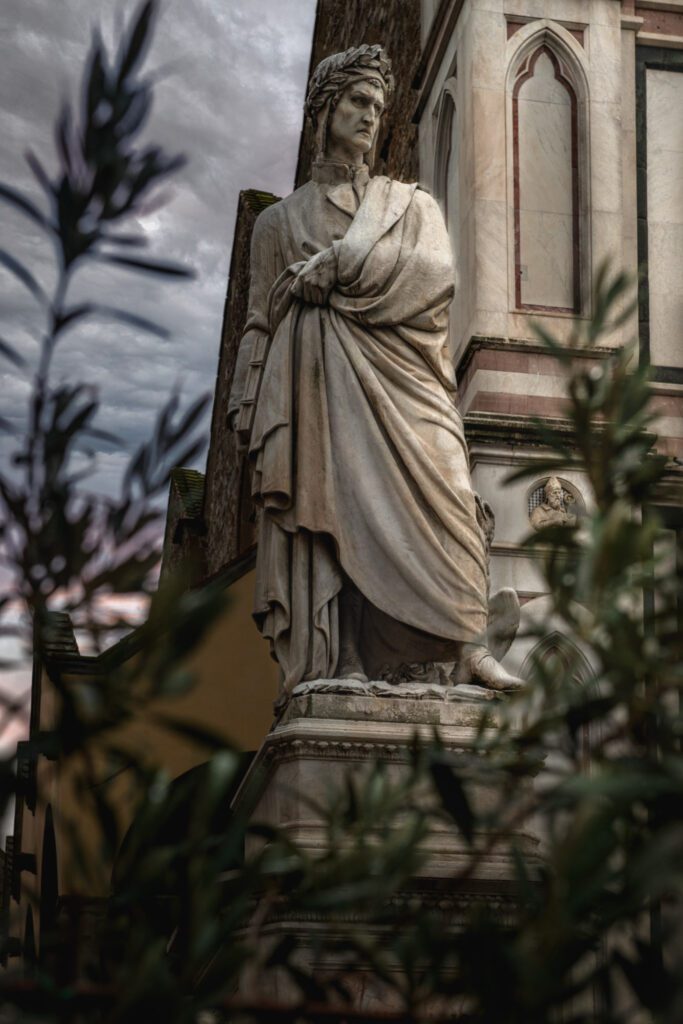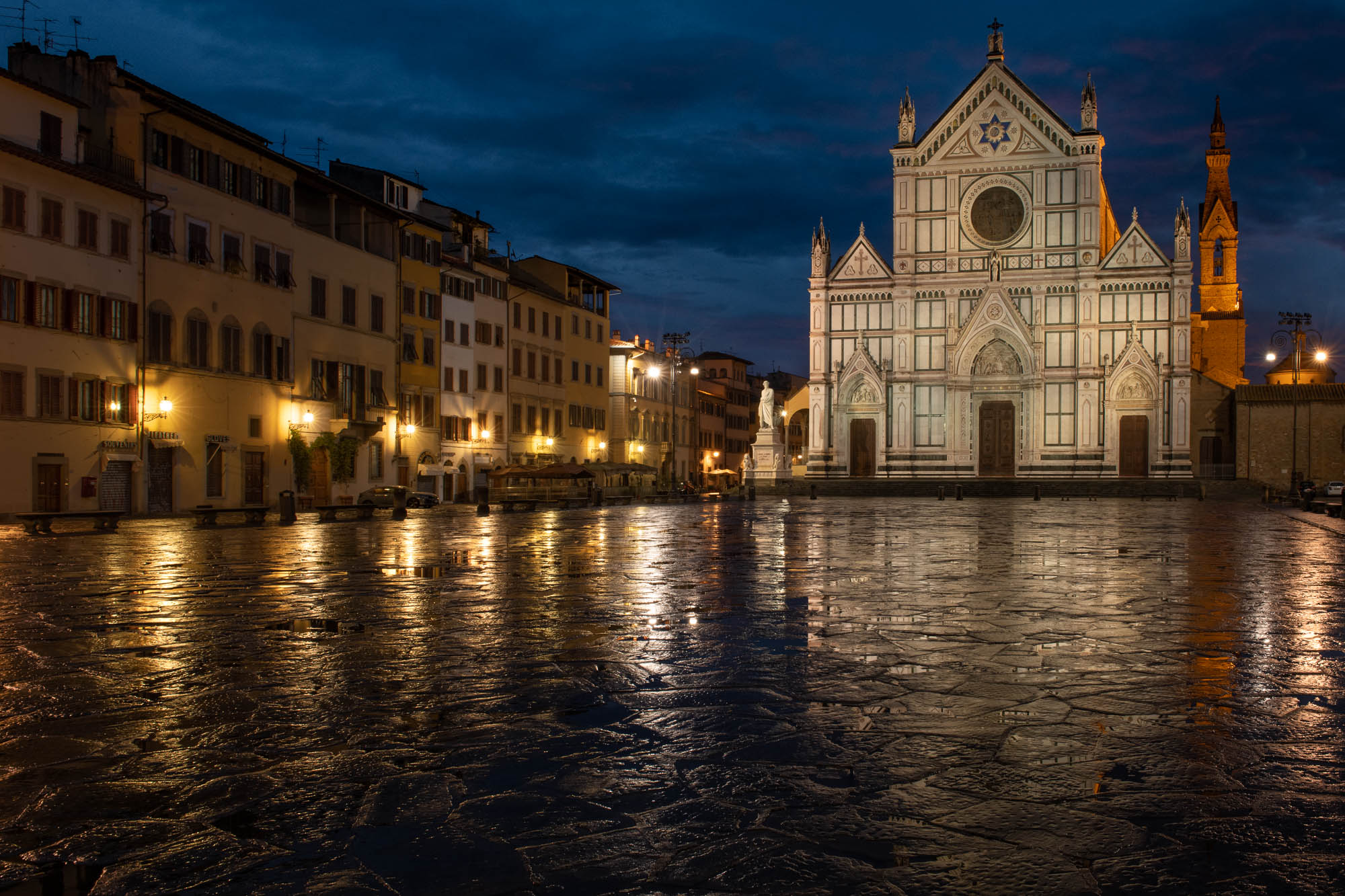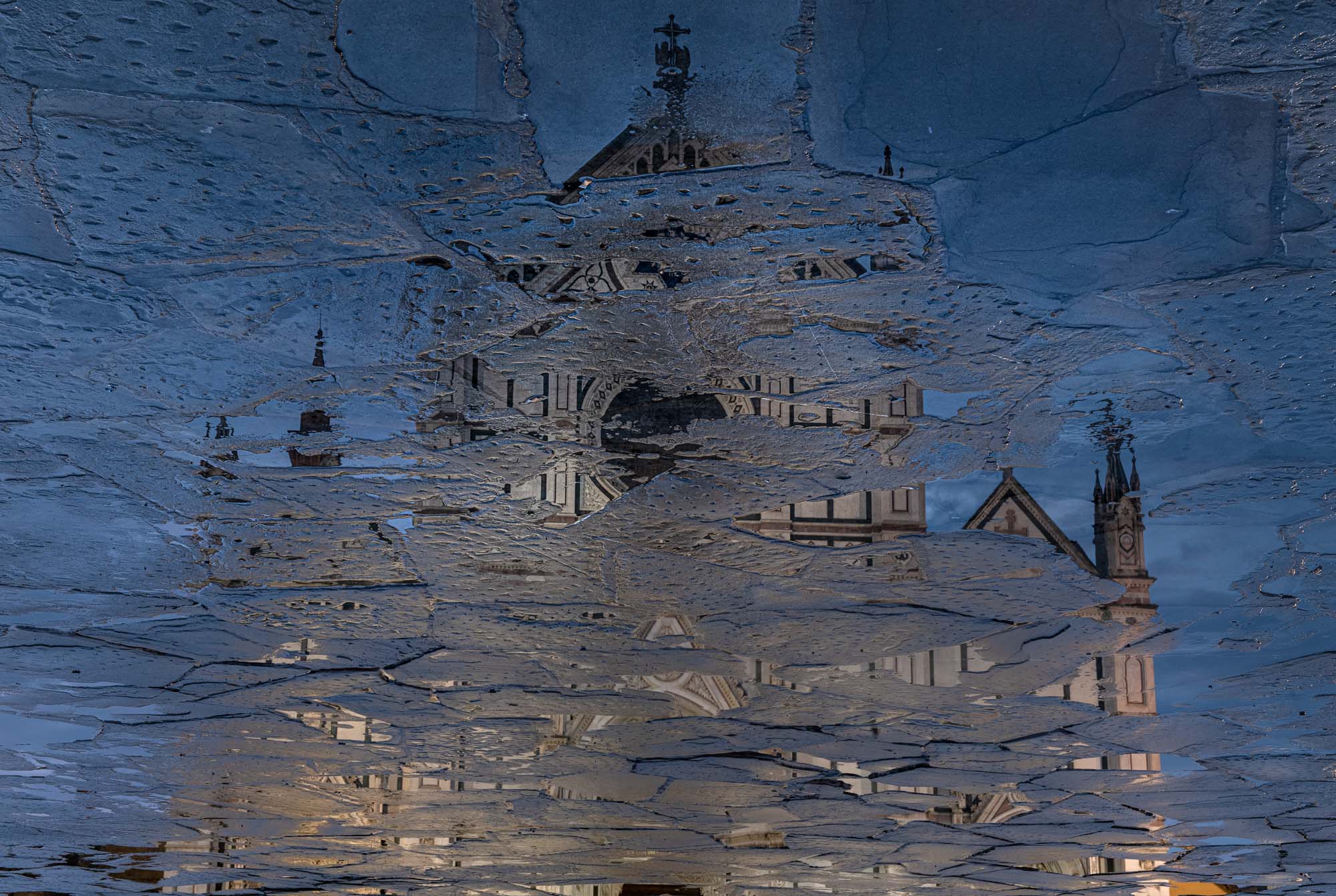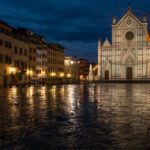The Basilica of Santa Croce is a remarkable piece of Gothic-style architecture that was designed by the architect Arnolfo di Cambio. Construction began in 1294 and was completed in 1385, and the church was consecrated in 1443. Its original stone exterior was much like the present-day exterior of San Lorenzo.
Over the years, attempts were made to embellish the facade. Still, it was not until 1857 that the Jewish architect Niccolo Matas was tasked with designing a new-Gothic facade using the traditional white, green and pink Carrara marble. He included a Star of David at the pinnacle of the tympanum, and despite being a traditionally Jewish symbol, the six-pointed star has been adopted by Catholicism as well.
Francis Joseph Sloane, the son of a wealthy expatriate Scottish banker and art collector, financed the project. Born in Italy and educated in England. He amassed considerable wealth from managing copper mines in Montecatini Val di Cecina, and under his stewardship, the mines became the biggest and richest in Europe.
Sloane, a devout Christian and philanthropist, was an influential force in Florence and donated large sums to charity. He initially contributed 20,000 scudi to the Santa Croce facade project; however, over time, his contribution increased in the form of loans to the princely sum of 400,000 scudi, which he then converted into a gift on the laying of the foundation stone by the Pope and in the presence of the Grand Duke Leopold in 1857.
Santa Croce’s facade has undoubtedly been the subject of different opinions throughout history. Edward Hutton, a prominent figure in the cultural scene of Florence, was not very fond of it. In 1907, he described it as a “pretentious work of modern Italy,” which transformed the Piazza into a gloomy cemetery.
And indeed, the Basilica is a cemetery with 270 tombstones. Each is a tribute or a testament to those who have left their mark on the world of art, history and music. The church is more than just a house of worship; it’s a living museum of history and art, and walking among these tombs, you can’t help but feel humbled by the power of human achievement they represent. Amongst the who’s who of tombs are Michelangelo, followed by those of Machiavelli, Galileo, Leonardo Bruni, Carlo Marsuppini, Rossini and Ghiberti.
However, my attention will turn to just two men, who were separated by time as Michelangelo Buonarroti (1475 – 1564) and Galileo Galilei (1564 – 1642), lived in different eras, and yet are neighbours in death; for Galileo’s sarcophagus seems to interact with the tomb of Michelangelo who faces him across the nave, and for both these men, this was not initially their first burial place.
The great sculptor, artist and architect died on February 18, 1564, and was buried in SS Apostli church in Rome. However, there was trouble brewing as Lionardo Buonarroti, his nephew and heir, was tasked with stealing the corpse”. In a daring move, Michelangelo’s remains were exhumed and smuggled out of the church in Rome by packaging the body in a bale of hay disguised as merchandise. The act was carried out in secrecy to avoid any potential hindrance from the Pope that would prevent the movement of Michelangelo’s body back to Florence. His remains are interned in an impressive tomb in Santa Croce.
As for the man born in the same year as the great sculptor died, I find his path to his final resting place far sadder. Imagine dedicating your life to science, uncovering groundbreaking discoveries about our universe, only to be accused of heresy by the Inquisition in 1633, for Galileo Galilei was banned and banished by the Catholic Church and put under house arrest for eight years before his death, in 1642. This was the fate of the brilliant astronomer who boldly asserted that the Earth revolves around the sun. Even after his death, he was denied a Christian burial and a proper monument and was unceremoniously buried in the vestry leading to the Novitiate chapel.
It would take a further ninety-five years for his remains to be moved inside Santa Croce to its present location. And an additional three hundred and fifty-nine years before finally, in 1992, Pope John Paul cancelled the condemnation imposed upon Galileo. His discoveries paved the way for modern astronomy and served as a reminder that progress often comes at a high personal cost.
From celestial moons and planets to balls of cloth. Now I am ill-versed in either the nuance or the legacy of this variant of the “beautiful game”; other than that, it goes by the name of “Calcio Storico” or “Calcio Fiorentino”. Imagine a game so intense that in 1574, Henry III, King of France, described the game as “Too small to be a war, too cruel to be a game”, and although I have referred to football, from what I have read it seems closer akin to Rugby minus any semblance of rules other than a gladiatorial approach to winning at all costs. The game has Roman roots, but the modern version emerged in the 16th century. Here, teams of 27 men representing the four districts of Florence, Santa Maria Novella, Santo Spirito, Santa Croce, and San Giovanni would quite literally slog it out on a specially prepared sandy playing field in Piazza di Santa Croce. This is a game where technique and strategy are secondary to brute force, with players wearing no form of protection, and full-on bare-knuckle fighting is perfectly acceptable. And after an intense 50 minutes of gameplay, the victorious team would be awarded the grand prize, a cow? Yes, you read that right, a living, breathing cow!
As the golden age of Calcio Storico faded, Piazza di Santa Croce received a new resident. In 1865 the sculptor Enrico Pazzi gifted a beautiful white Carrara marble statue of Dante to Florence to celebrate the poet’s sixth century since his birth. The statue was placed in the middle of the Piazza and unveiled amidst much grandeur and with the king of united Italy, Vittorio Emanuele II, in attendance. An interesting coincidence was that Enrico Pazzi was born in Ravenna and died in Florence, while Dante, the great Florentine poet, passed away in exile in Ravenna. It is curious how history intertwines people and places in strange and coincidental ways.
In 1968, Dante’s statue was relocated to its current location on the steps of the Basilica of Santa Croce, a great vantage point to watch the traditional Calcio Storico that was set to resume play in the Piazza. I can almost imagine the great poet, who before his exile lived just a stone’s throw away from the Piazza and was passionate about his birth city, taking an interest in the game and rooting for team Santa Croce. I can almost hear him shouting “Back of the Net” as his team, the Azzurri (blues), takes the lead.
As the rain cleared and the blue hues of twilight set in, I knew it was the perfect moment to capture the Santa Croce facade, as the wet paving stones of the piazza would add an extra sparkle to the foreground. My intention was also to get a shot at sunrise. However, as the sky began to change to pinks and oranges, the hustle and bustle also increased as white delivery vans began to populate the piazza, delivering goods to the neighbourhood shops and restaurants. It was a surreal and frustrating experience watching the area’s transformation from a quiet, serene moment to the bustle of daily life.
Finally, this piece needs to end as time is pressing, and my spell checker is going into overdrive, so let me try and conjure up a form of reprise.
As I sit here re-reading my rambling about Santa Croce’s facade, I can’t help but think about how one idea led to another. What began as a short piece on the facade has somehow morphed into an exploration of its history, a benefactor an architect, and a couple of intricate monuments and burial sites of Michelangelo and Galileo. And let’s not forget about Dante’s statue and the traditional Calcio Storico, which, although not directly linked, the statue relocation played a role in the game’s revival. So, in short, coincidence, fate and relocation are the threads that kept my fingers tapping at the keyboard.





